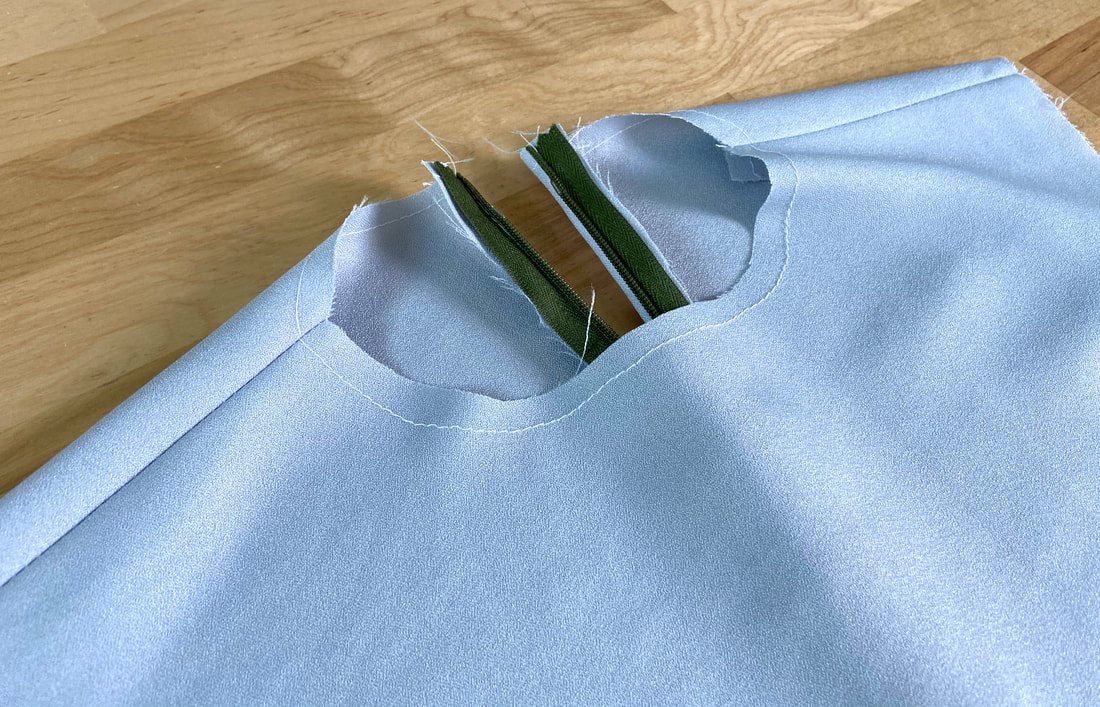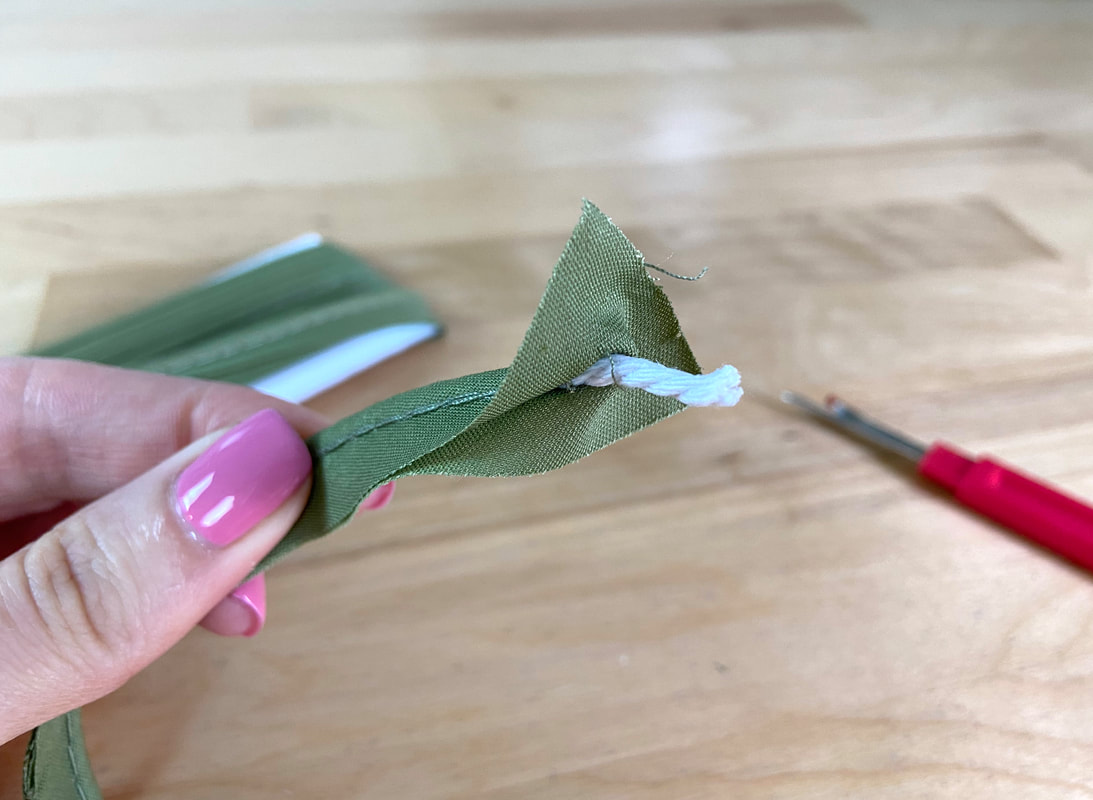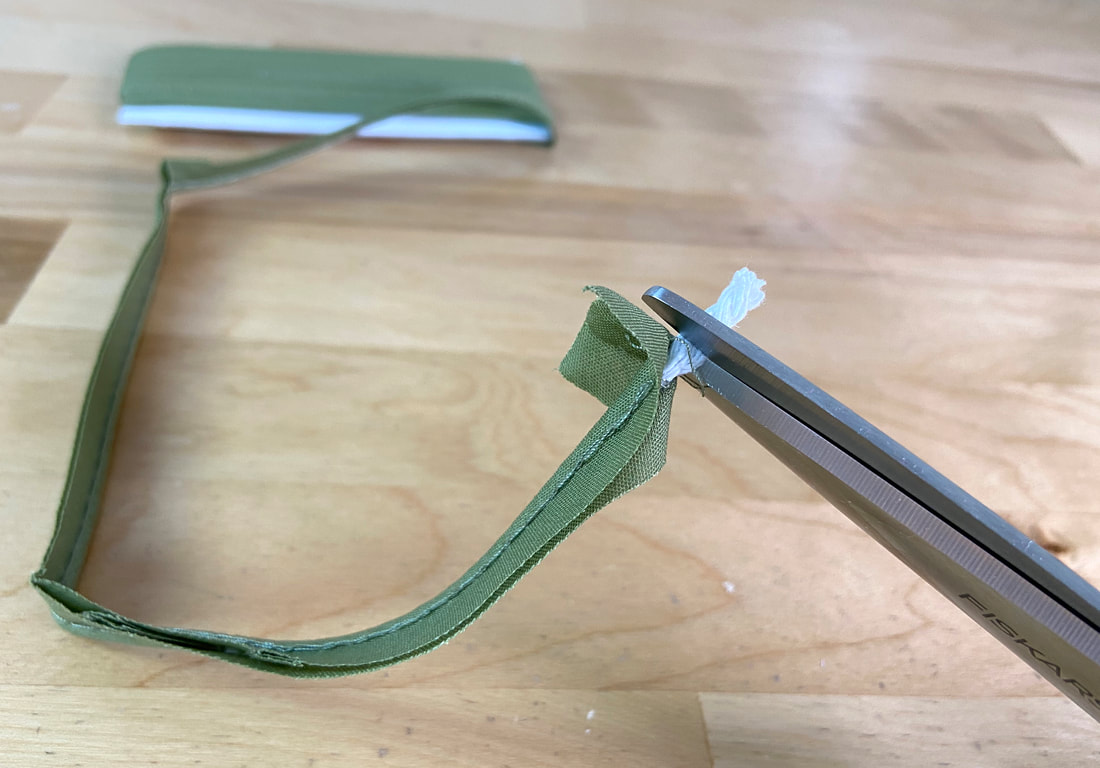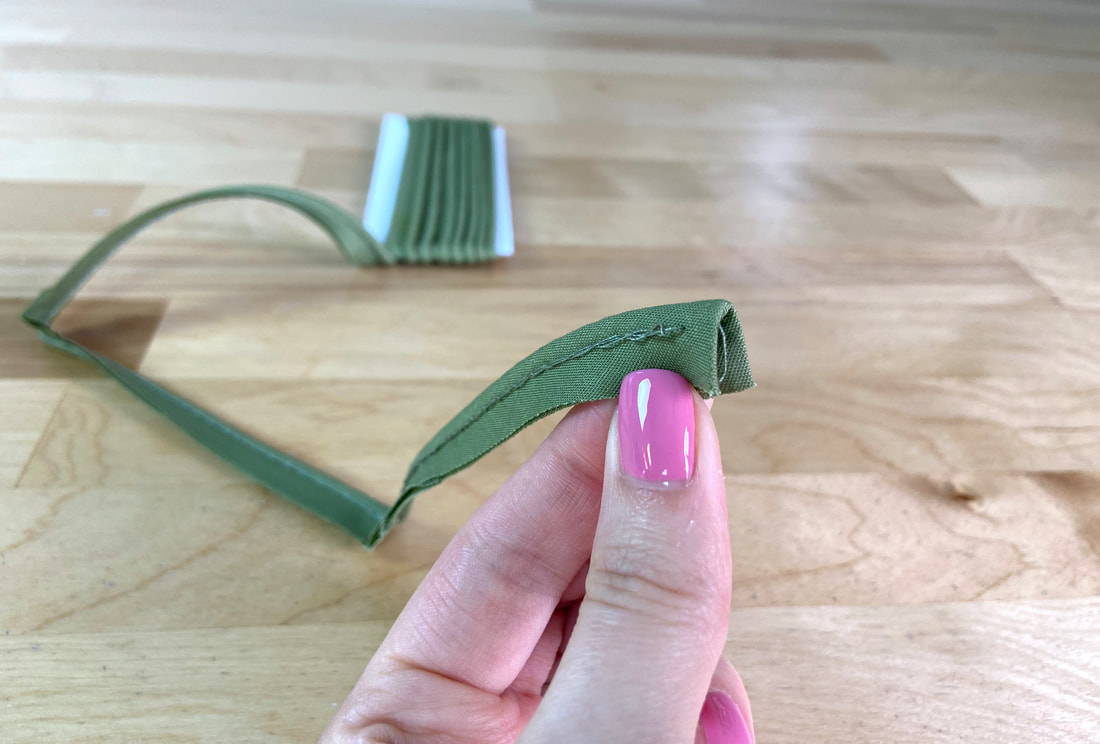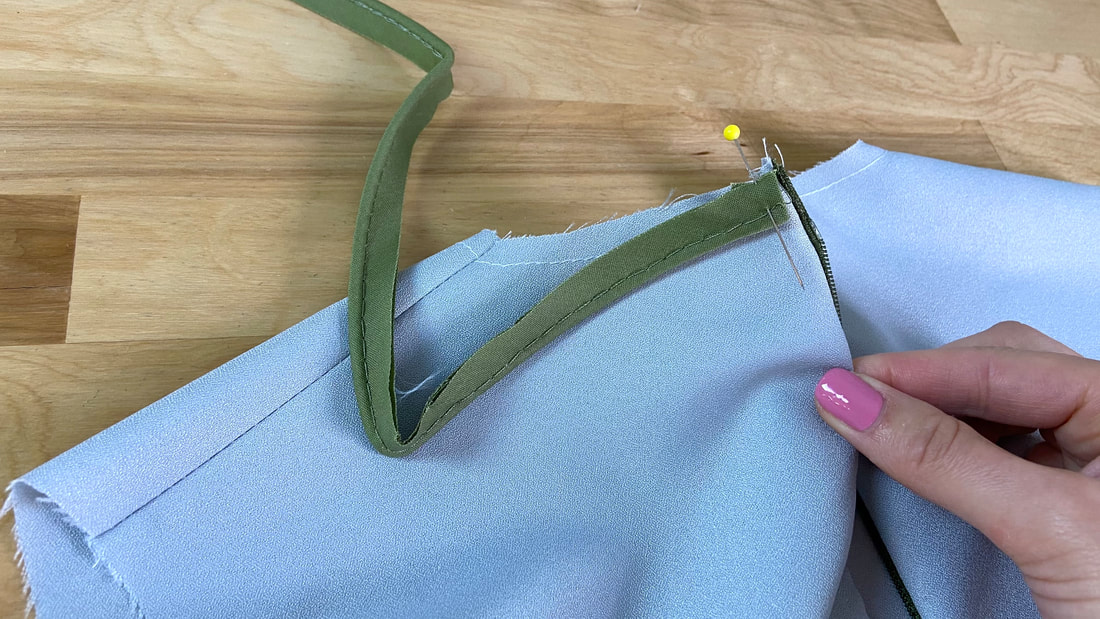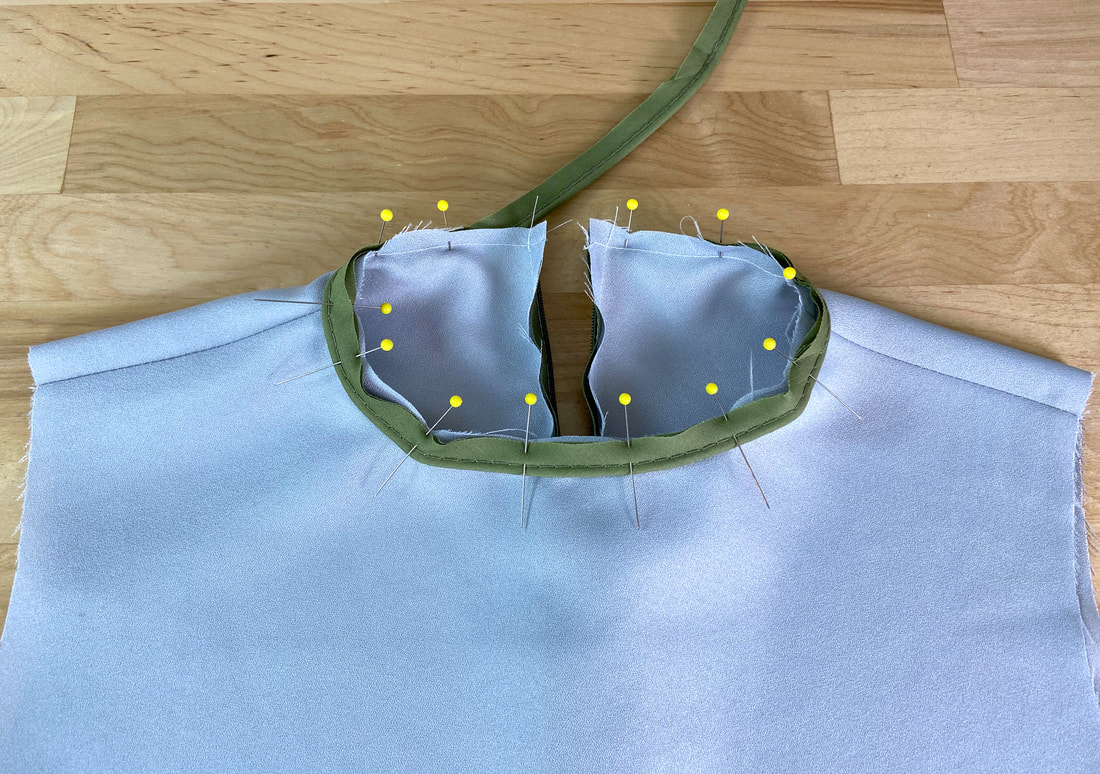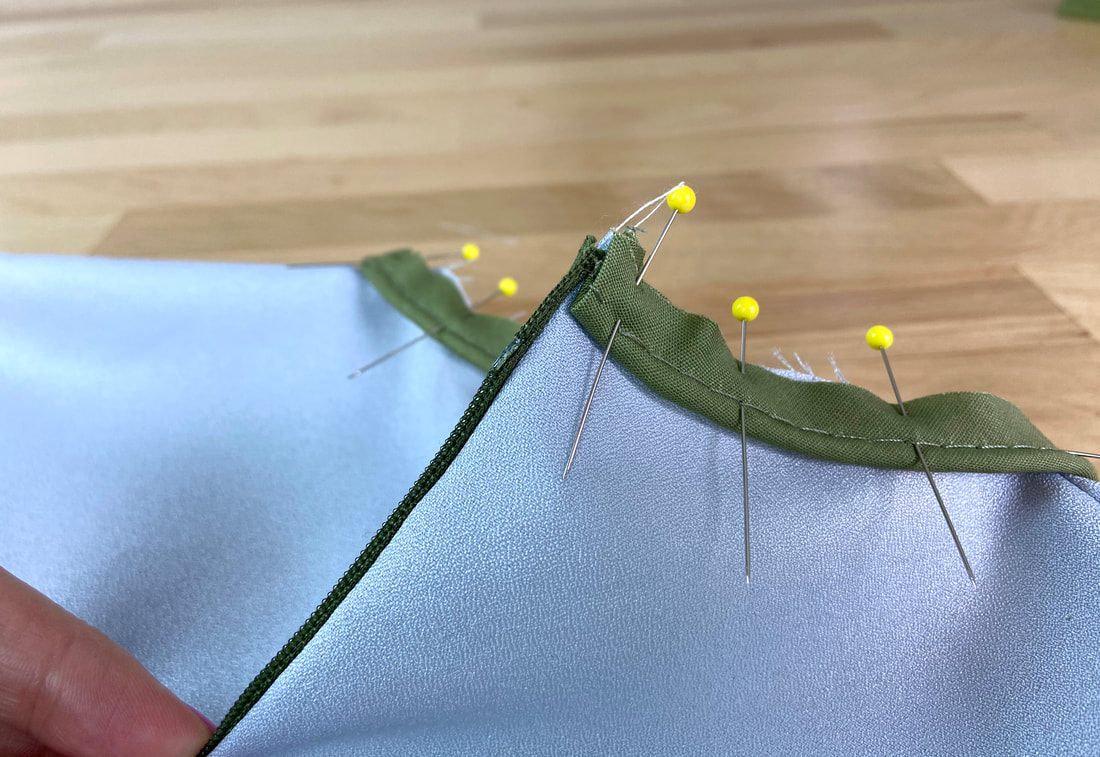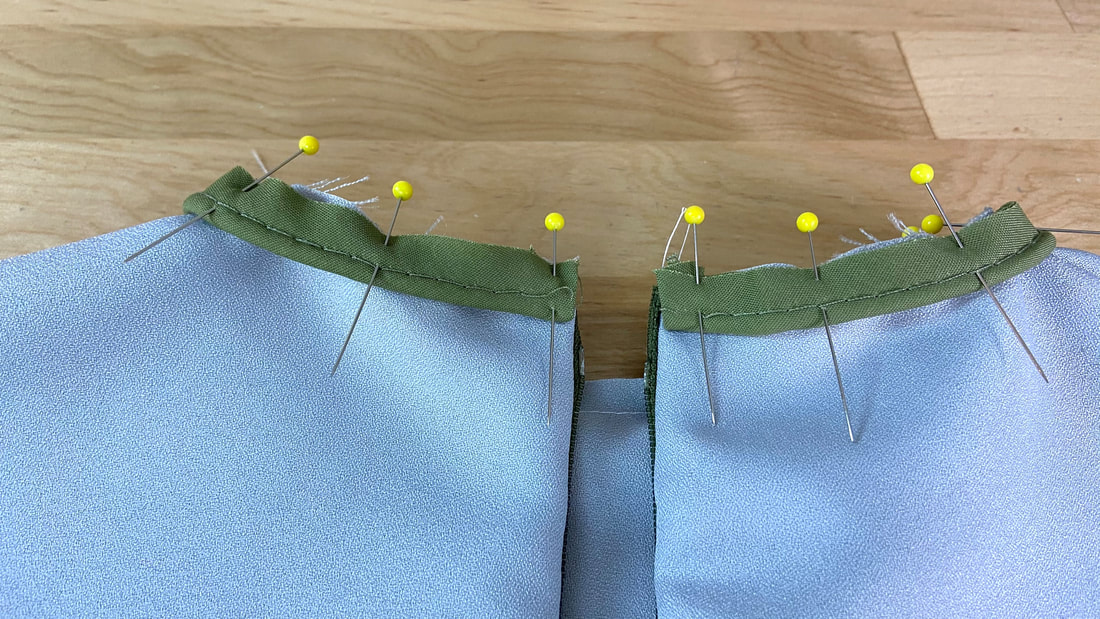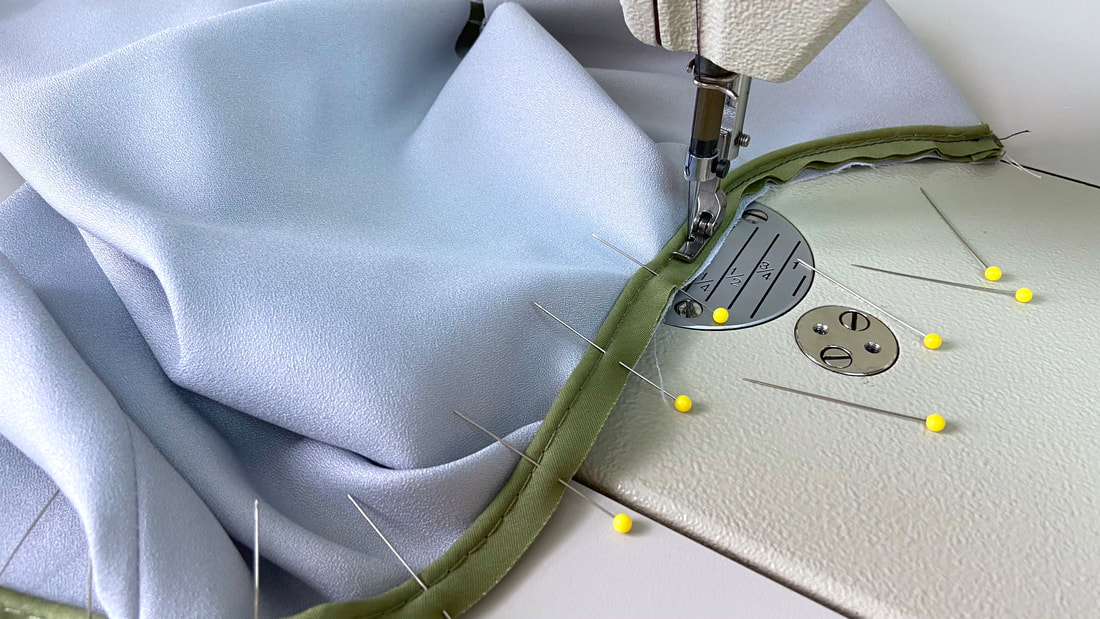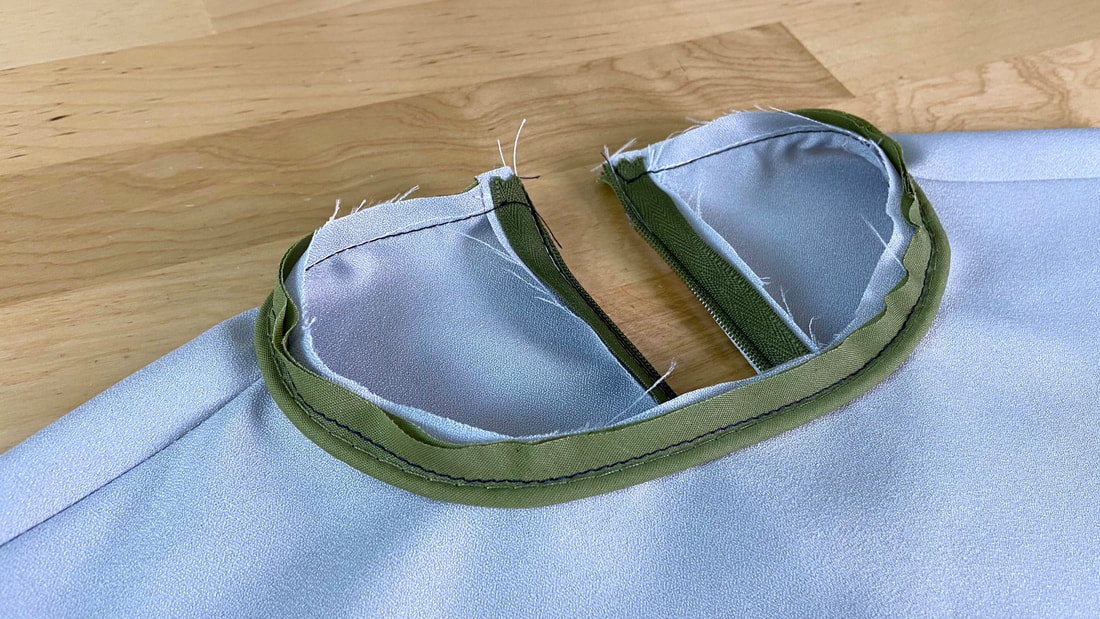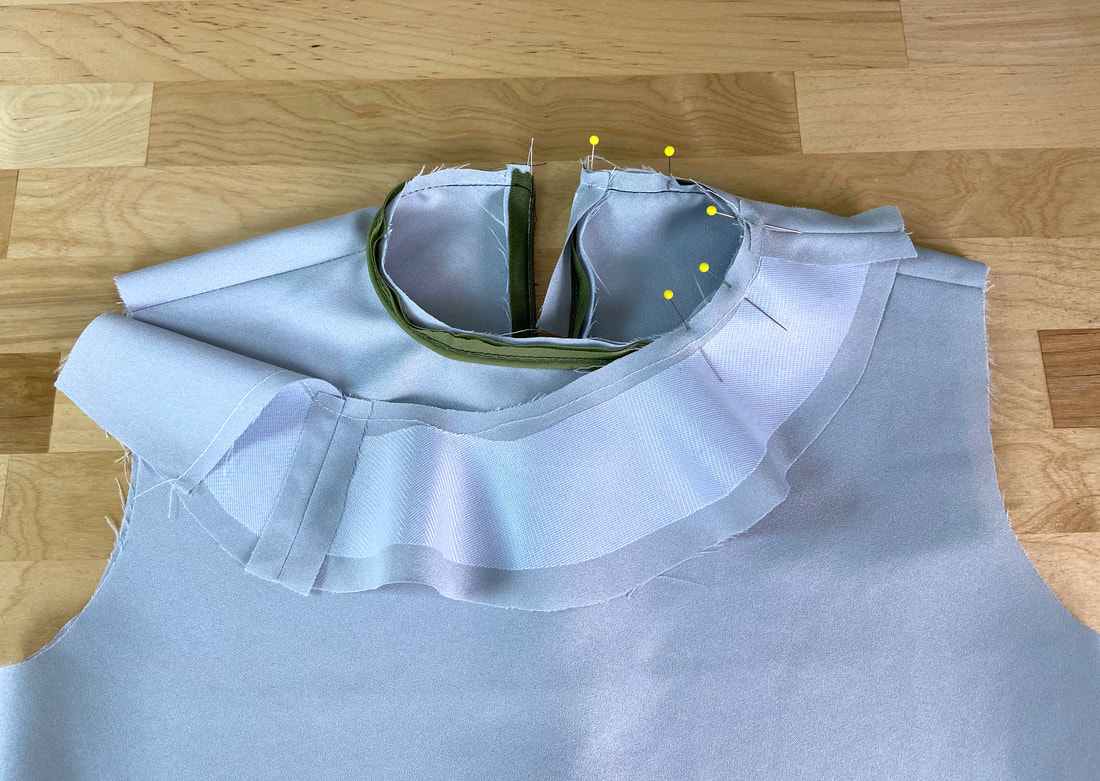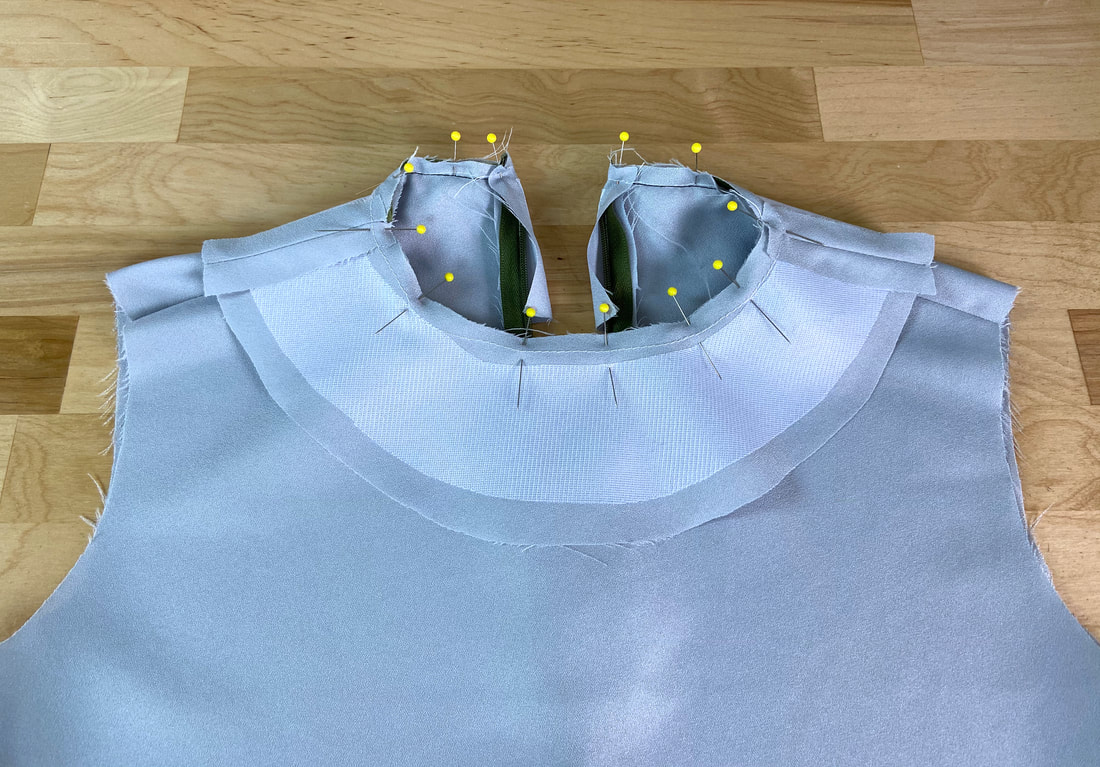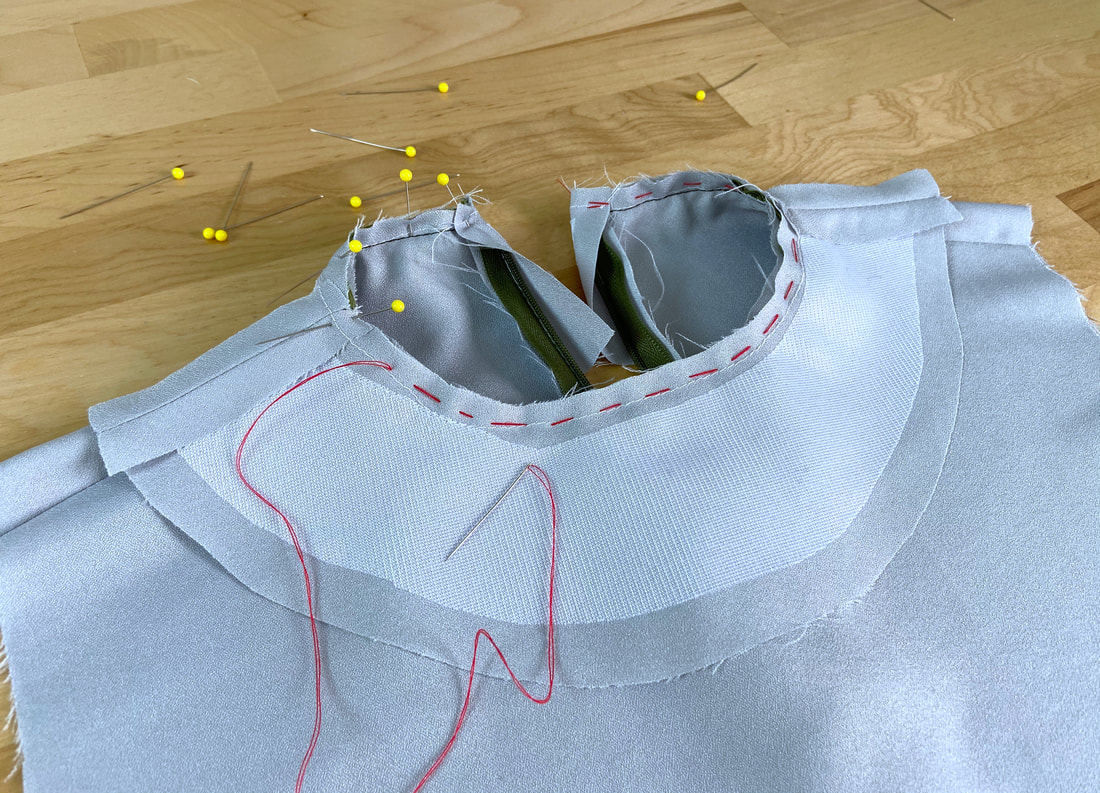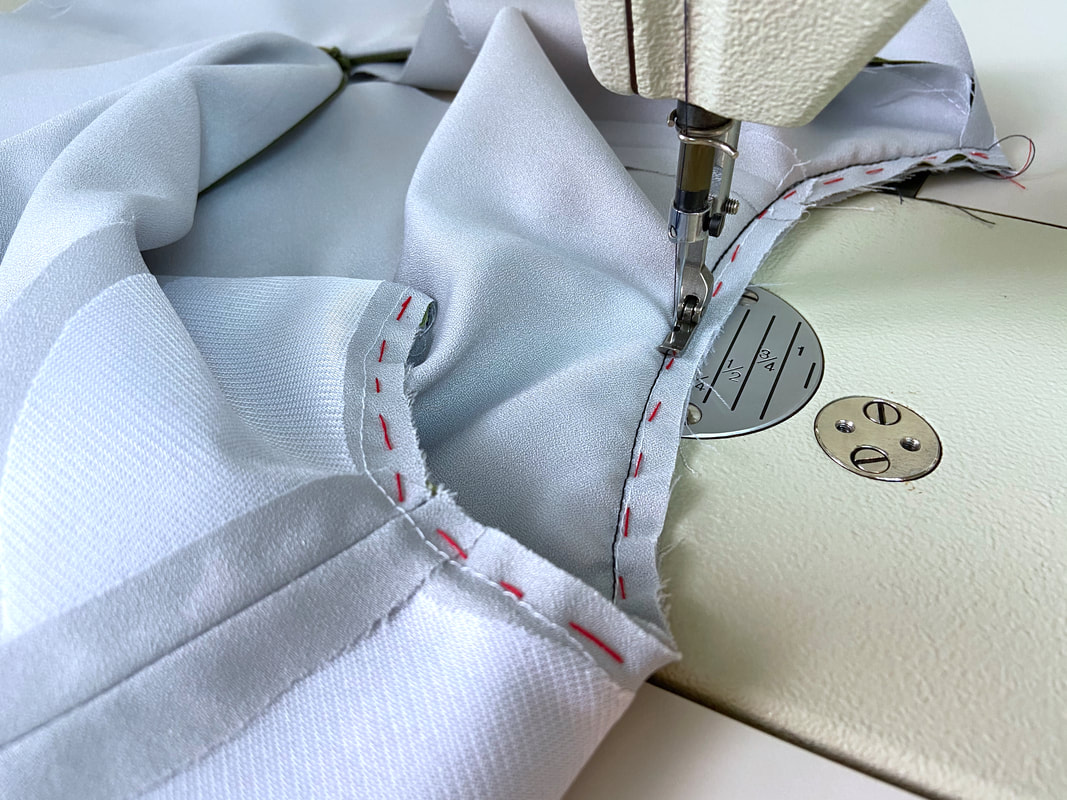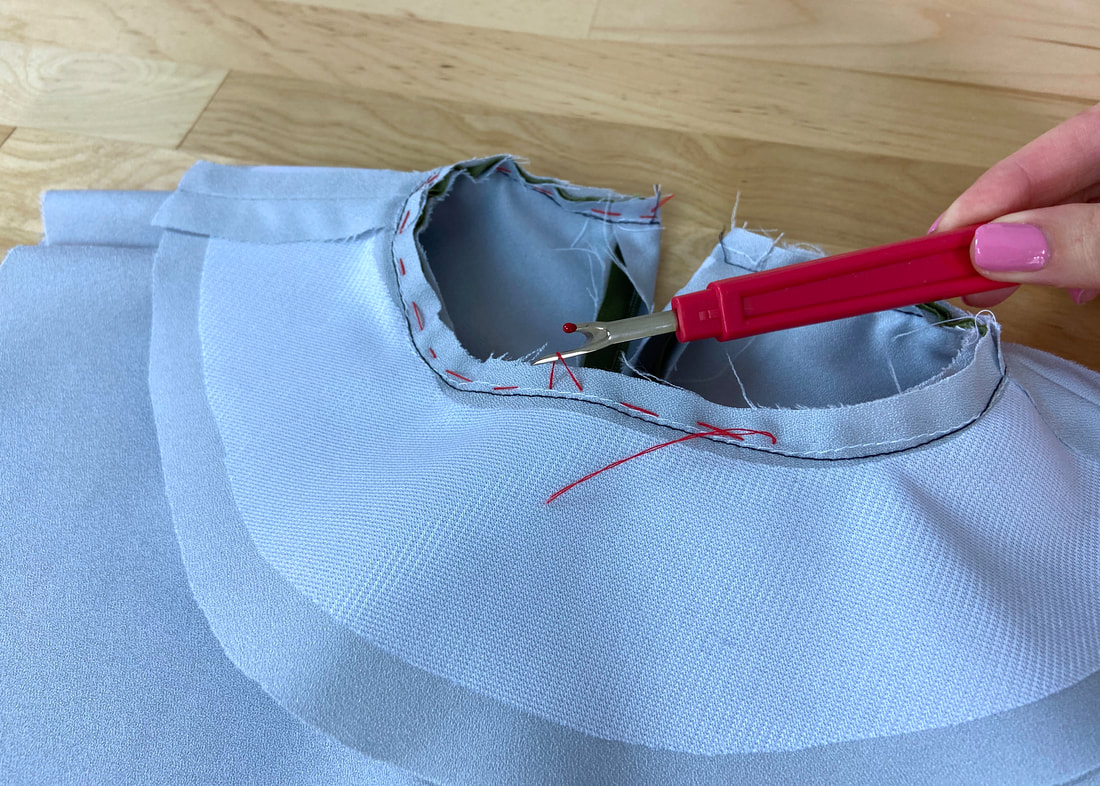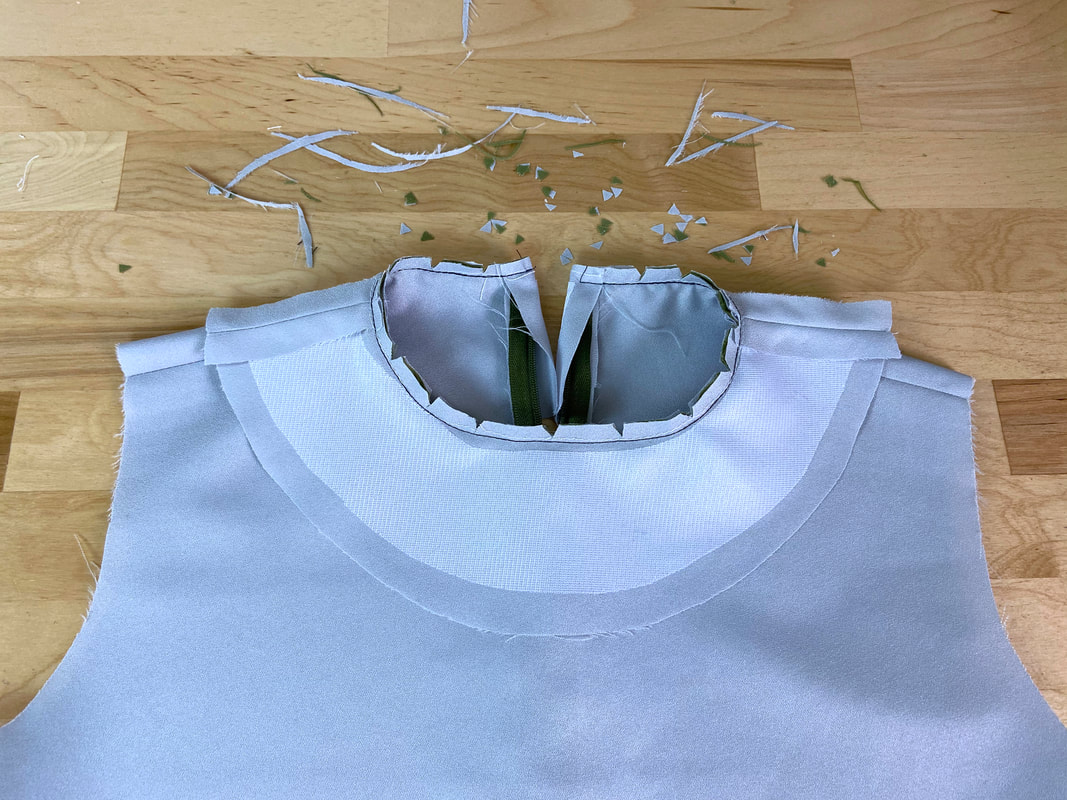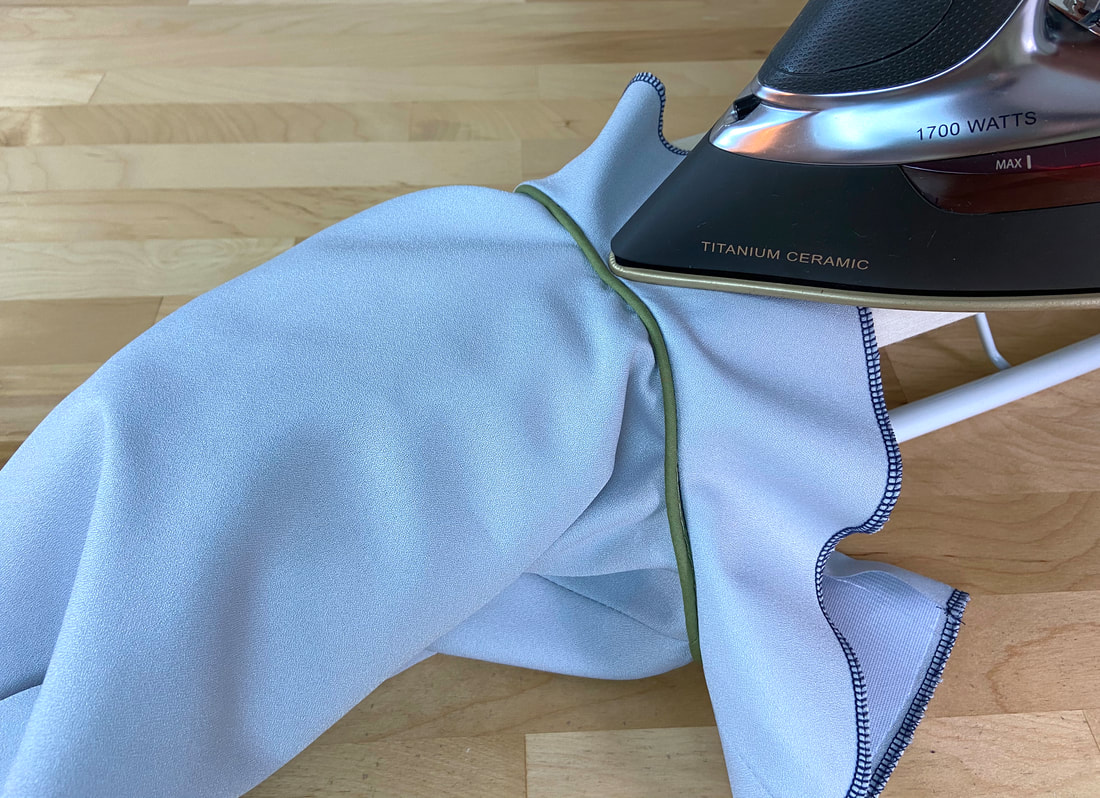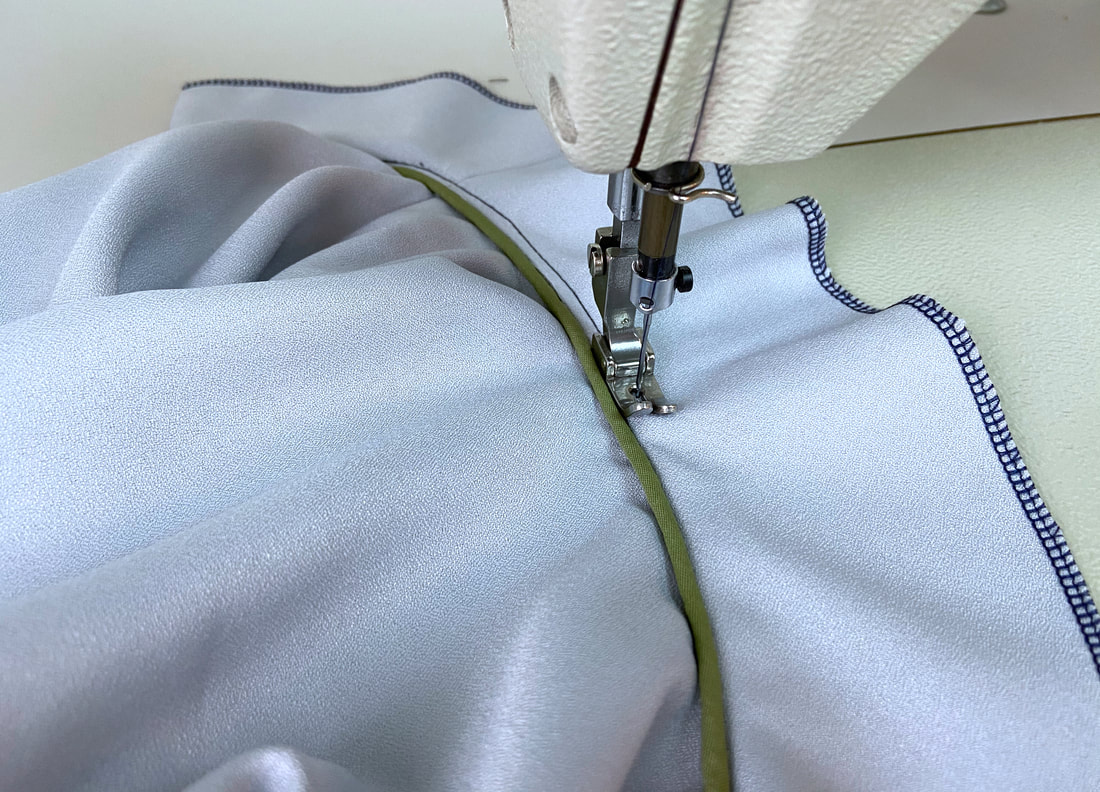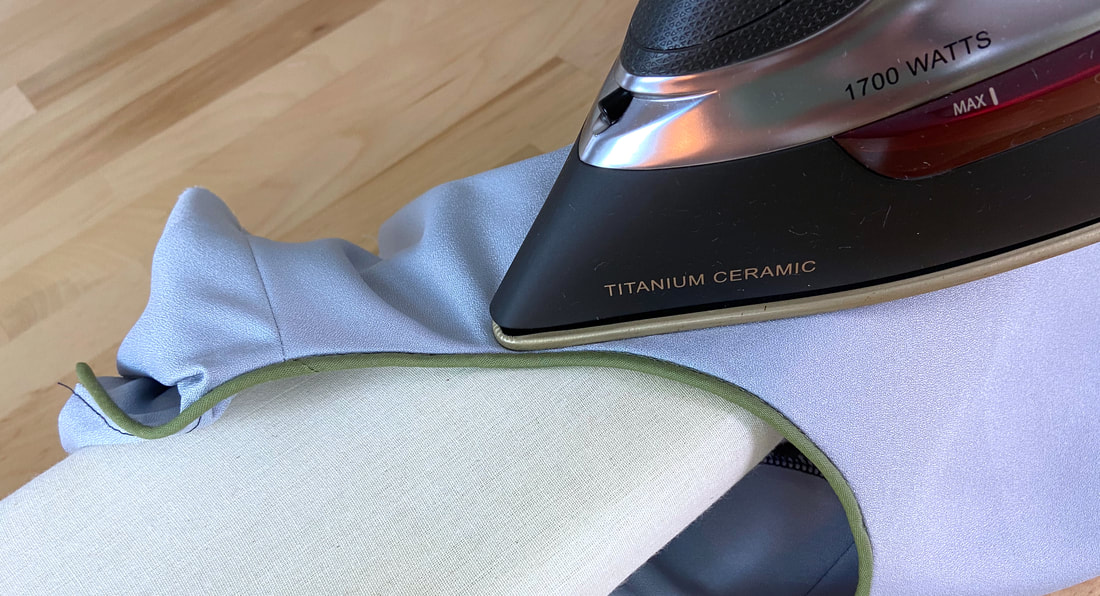1. Assuming you are adding piped cording to a neckline with a center back zipper opening, staystitch the neckline edges and construct the garment shoulder seams as described in this neck facing tutorial: Sewing A Neck Shaped Facing
2. On one end of the cording, undo some of the stitching that holds the cord together.
3. Trim the cord to about ¼” and fold the fabric over the cord end at ¼”. The cording end should now be clean finished with a fold.
4. Align the clean-finished end to the edge of the zipper opening such that the lengthwise stitching portion of the cording aligns with the neck edge. Insert a pin horizontally to hold the piped cording in place.
5. Continue aligning and pinning the cording to the neckline edge until you arrive at the other end of the zipper opening as shown. Leave a little over ¼” of excess at the end and trim the remainder cording off.
Unstitch the tape and fold the cording fabric edges in at ¼” as shown in Steps 2-3 above. The finished end of the cording should align with the garment's finished opening edge.
At this point, both cording ends should perfectly align with the zipper opening edges.
Note: For added stability in the stitching process to follow, hand baste through the cording tape and neckline edge underneath.
6. Using a zipper foot, machine stitch the cording tape to the neckline edge right next to the cord's raised edge as shown. Remove each pin as you approach it.
It helps to follow the existing cording stitch as a guide.
7. Align and pin the facing unit to the garment as shown. The piping cord should be sandwiched in between the two layers.
It also helps to hand baste the layers for added stability during the stitching process.
8. With the garment's wrong side up (facing layer underneath) and the needle aligned to the left of the zipper presser foot, stitch in between the raised cording and visible stitch applied in Step 6. This final stitch will connect the facing to the garment neckline, while also enclosing the cording in between and hiding the stabilizing stitch from Step 6.
Once stitched, remove all the temporary hand basting using a seam ripper.
9. As you would with any neck facing application (especially curved necklines), trim and notch the seam allowance and cording tape along the entire edge. It may be necessary to grade these three layers, leaving the garment seam allowance edge as the longest layer.
More on grading in this tutorial: Trimming and Grading Seam Excess
10. Extend the facing and seam allowance away from the garment and understitch through the facing, seam allowance and cording tape underneath as shown. This will keep the facing flat and pointing inwards in the finished. You will need to use a zipper foot to understitch next to the raised cording edge.
11. Last but not least, press the finished facing inwards and tack the facing edges down at each shoulder seam as described in this neckline facing tutorial: Sewing A Neck Shaped Facing

